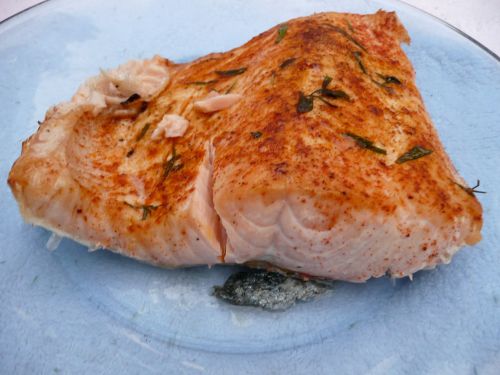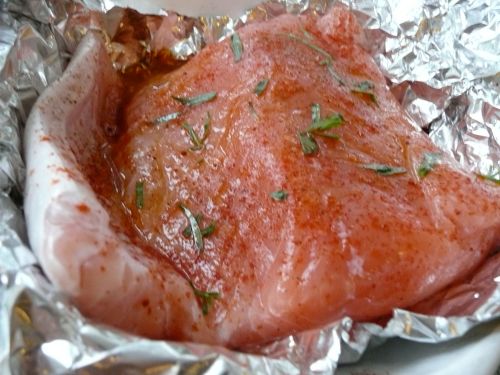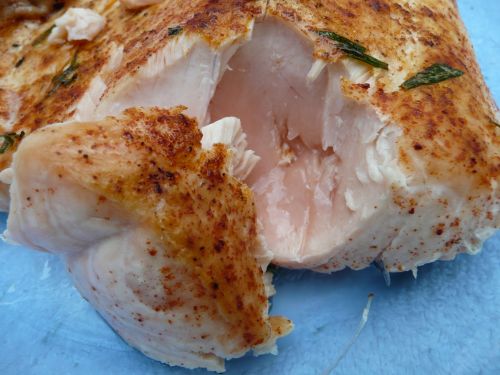 I wrote a few weeks ago about dealing with my beloved grandmother’s decline in health as she faces pancreatic cancer. I wrote that the desire to bring her food was inseparable from how I express love, and how she has expressed love for me.
I wrote a few weeks ago about dealing with my beloved grandmother’s decline in health as she faces pancreatic cancer. I wrote that the desire to bring her food was inseparable from how I express love, and how she has expressed love for me.
~
Food and love has been on my mind a lot during these emotionally up-and-down months spent hoping, not hoping, living life, being distracted from life. The emotional fluctuation is reflected in my kitchen. Some days and weeks I have little desire to cook.
~
Some weeks I want to cook everything I can get my hands on, to fill my house with familiar and comforting aromas: my mother’s roast chicken, my grandmother’s mandelbrot, my favorite chicken from Thailand. The mashed celery root that smells like a few winters ago, the ground lamb dish that smells like last summer. Salad dressings that taste like mother’s and grandmother’s, coating greens and plenty of tomatoes.
~
Familiar foods of home on the stove tell loving, olfactory lies: Things are not changing, and here is the smell and the taste of the past as proof.
~
The lie is a comfort during times of grief, but cooking foods from the past paradoxically gives us a chance to create new stories for the present and future. Share a dish with a friend, and now the friend has a new memory associated with the taste, as do you. Memory is fascinating: an original memory, already imperfect in its construction, is replaced with a fresh version each time we think about it. The story of any dish is similarly changed each time we cook it. I share food, and remember I’m not the only one here. I pass on some of the love in a dish I’ve learned to make. Eating is a shared sensory experience, a way to explain, This is a flavor I’ve tasted. This is what it has meant to me. What it means to me is dynamic and changing. Let’s eat.
~
It’s a way to look forward, and maybe the only way.
~
I’m taking stock of memories, of present circumstances, of wishes for the future. Of things I want to say to my grandmother. Of things I won’t be able to share with her that I wish I could. Of memories we’ve lived together and how not to keep them sequestered as memories, but to keep them alive, a reflection of the dynamic way the brain builds memories afresh each time we recall them.
~
I’ve been sketching out some food postcards from my interactions with my grandmother.
~
My grandfather, calling Frusen Glädjé ice cream Froojie Hadjie. My grandmother laughing, mostly at how hard it made my four-year-old brother and three-year-old self laugh.
~
Pot roast, when I was finally starting to eat red meat again in my early twenties. I could have eaten the whole thing. She was delighted. Post roast is old-fashioned, she said, but I happen to like it.
~
My mother and grandmother at Passover, debating whose charoses to make. Don’t tell, but I like my mother’s better.
~
A raspberry bush she kept planted in a pot on her patio back in Long Island. And a blueberry bush. Raspberries were my favorite; blueberries, my brother’s. She’d save the ripe ones still on the bush for our visits, knowing the thrill of finding a ripe berry. A thrill I haven’t lost yet.
~
Boxes and boxes of coffee candy. Purchased presumably from Costco. My grandmother sent this to me constantly in college. I enjoyed one or two at first. Eventually I’d unload hundreds of little gold-and-black wrapped candies on friends, before I got up the guts to tell her I didn’t like coffee candy anymore. The box in the mail room would make me smile anyway.
~
Boxes of hamantaschen, sent yearly for Purim, with cards or notes on pastel stationary that said Israel at the top. I was skeptical of the triangular prune pastries at first. “Hummies,” she said, to make them more appealing. Savoring and spacing out the last ones in childhood (I still do) nearly to Passover because they were so good, and so rare.
~
Teaching me to make hamantaschen, to roll out the dough. To paint the x of butter in the middle of each one. To lean on the dough just so. Not like this, like this. This and this, for the record, look identical.
~
The first year I made hamantaschen for the family. In college. Went to Circle Pines Center in the cold March Michigan woods to be nearly alone for a week, and to bake. My grandmother was caring for my grandfather, who was beginning a decline into dementia. It was the first time she couldn’t make her hummies. I rolled out dough on the cold, stainless steel countertops of the industrial kitchen. Bought bags of dried prunes and lemons at Meijer’s. Talked to an occasional other visitor at the co-op, wrapped up in down coats and sipping cups of tea on metal stools in the farmhouse kitchen. Sent the boxes from the Delton post office. Cookies, I said, like she always does. They’ll never understand what you mean if you explain.
~
The year the hamantaschen didn’t come. My first or second year in Seattle. My grandfather was getting worse. She hadn’t said anything, so I assumed the hamantaschen were coming, but when they didn’t, I didn’t want her to feel bad. Later, she called me and tentatively mentioned she was surprised I hadn’t thanked her; had I enjoyed them? There was a long, horrified pause before we realized the box must have gotten lost in the mail. I tried not to picture the box rotting away in a cavernous warehouse of lost mail somewhere, or a disgruntled postal officer eating the hamantaschen, far from my house. Cookies, she might have said. Cookies.
~
Actual cookies. My grandmother kept three cookie jars when we were kids, and at least two are still in her apartment. Lovely ceramic jars she probably bought traveling through artisans’ shops in Vermont. Each object she bothers to own has a story, a habit I’ve picked up. The wide jar with the wonderful smooth, brown lid. Lifted by the little handle, making a clinking sound on the edge. Releasing the smells of chocolate chip cookies, always with walnuts and golden raisins mixed in.
~
My grandmother at the farmers market, on a mission. This vendor and then that; he might run out of strawberries, she might run out of broccoli, and I don’t want to miss those nice potatoes. I may possibly have gotten this tendency from somewhere.
~
Calling my mother on this last visit to California, remembering together who all my grandmother’s vendors are. Who is the potato guy? This is her lettuce place, right? Collecting everything she loves, everything she might want to eat.
~
A basil plant she often keeps on her patio. The French variety with tiny leaves. Trimming just a few sprigs at a time, for chicken or pasta. “Your mother says I shouldn’t keep this, that she likes to use a whole lot of basil at once. But I find this is just right for me. Will you get me the scissors?”
~
Freshly squeezed orange juice in the mornings. My grandfather’s domain, while he was still alive, even when he as declining, just to show he could do it. Strained for my grandmother. Not too much, not too acidic. Oranges bought at the market, of course, from her favorite vendor. Loaded into the bottom of the cart she keeps in her trunk.
~
Are you hungry? Have you eaten lunch? Are you sure? She asks this of everyone in her house. Relatives, a neighbor, her nurse. Even when I was there last, and she was weak and depressed and needing help getting into a wheelchair, she made sure everyone had eaten and wasn’t going to be cold outside. Laugh about Twitteleh all we might, some stereotypes hold true.
~
I call her now and she’s too tired to talk much. Am I happy? How is school? Am I working hard? How is my house? Have I been eating? Of course, Grandma. Everything’s fine.
~
Her plum cake, which I wrote about earlier this fall. The friends who keep writing or calling to tell me they’ve made it. She’s glad when I tell her.
~
Coming home from a college semester in Thailand, having burned off all my taste buds on hot peppers and chili pastes. Flying into Los Angeles, staying with my grandparents. I couldn’t taste a thing my grandmother served me. I finally found a bottle of hot sauce in her fridge, presumably something my uncle had left there or she’d bought for guests. I reassured her it was fine, that this way I could taste her food. She looked at me with the same bewildered expression I’d given my Thai host sister a few months before, when I’d cooked her pasta with fresh tomato-basil sauce and she’d loaded her plate with hot sauce. I understood now.
~
What my grandmother proudly calls her “one oriental dish” which is also her one dish she’s ever made that I can’t stand. She first made it for me in those jet-lagged post-Thailand days thinking it would taste just like what I’d been eating in Asia. It’s some combination of tuna, Chinese dried chow mein noodles, water chestnuts, and I think cream of mushroom soup. This dish should have been outlawed after the 1950s. The hot sauce didn’t help.
~
My grandmother’s rotisserie chicken recipe, which I wrote about in a short story. One of my fiction classmates, in his critique, said it was unfair that he got hungry when he read my stories.
~
In the story, I wrote about Monty, a curmudgeonly, old neighbor, for whom she bought a Costco rotisserie chicken every week, because that was something he liked. He never said thank you, she told me. My parents didn’t understand why she bothered, or why she drove him to the senior center sometimes. He’s old, she’d say. He has nobody. I started; how I can I stop? The man was a Holocaust survivor, had lost his wife, trusted few people.
When I visited, she asked me to bring him the chicken (it took a few tries; she had to call and yell at him to answer the doorbell). He found me in the hall, alone, and told me in English and Yiddish what a beautiful thing my grandmother does, how it’s a mitzvah, how he’s all alone. His eyes said most of it.
~
Chicken sandwiches with lettuce, wrapped in waxed paper, packed for a day at the beach. Boogie boards, sand, a smiling woman with her umbrella and chair. More sunscreen. Lunch is perfect.
~
My grandmother refusing to eat some days. Tea, jello maybe. It’s rough.
~
Passover this past year in New York. So thankful I stayed. Lox on her matzah in the morning. Heaven, she said, just right. Singing songs from musical theatre at the seder table (no, not Andrew Lloyd Webber; somehow we got into Guys and Dolls and A Funny Thing Happened on the Way to the Forum). My grandmother can never remember lyrics.
~
So many stories. The grief lies in realizing that at some point the number of stories will be proven finite. The trick to immortalizing, or continuing to count them, is to keep cooking the food, sharing the food, sharing the stories, experiencing new stories. The mind creates new memories out of old ones, new stories from old. The recipes and experiences continue.
The sharing, and the love, goes on.
~















































































































